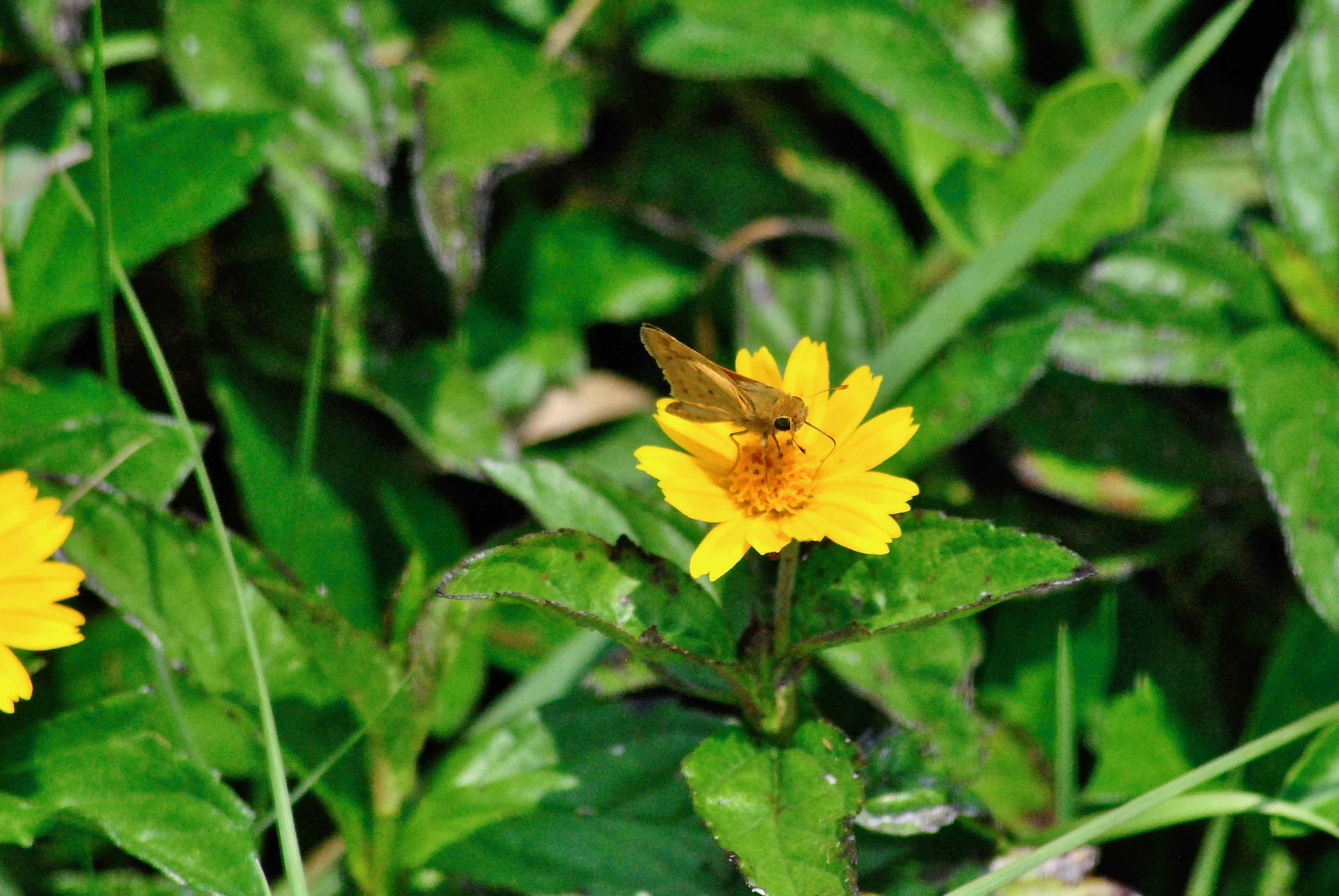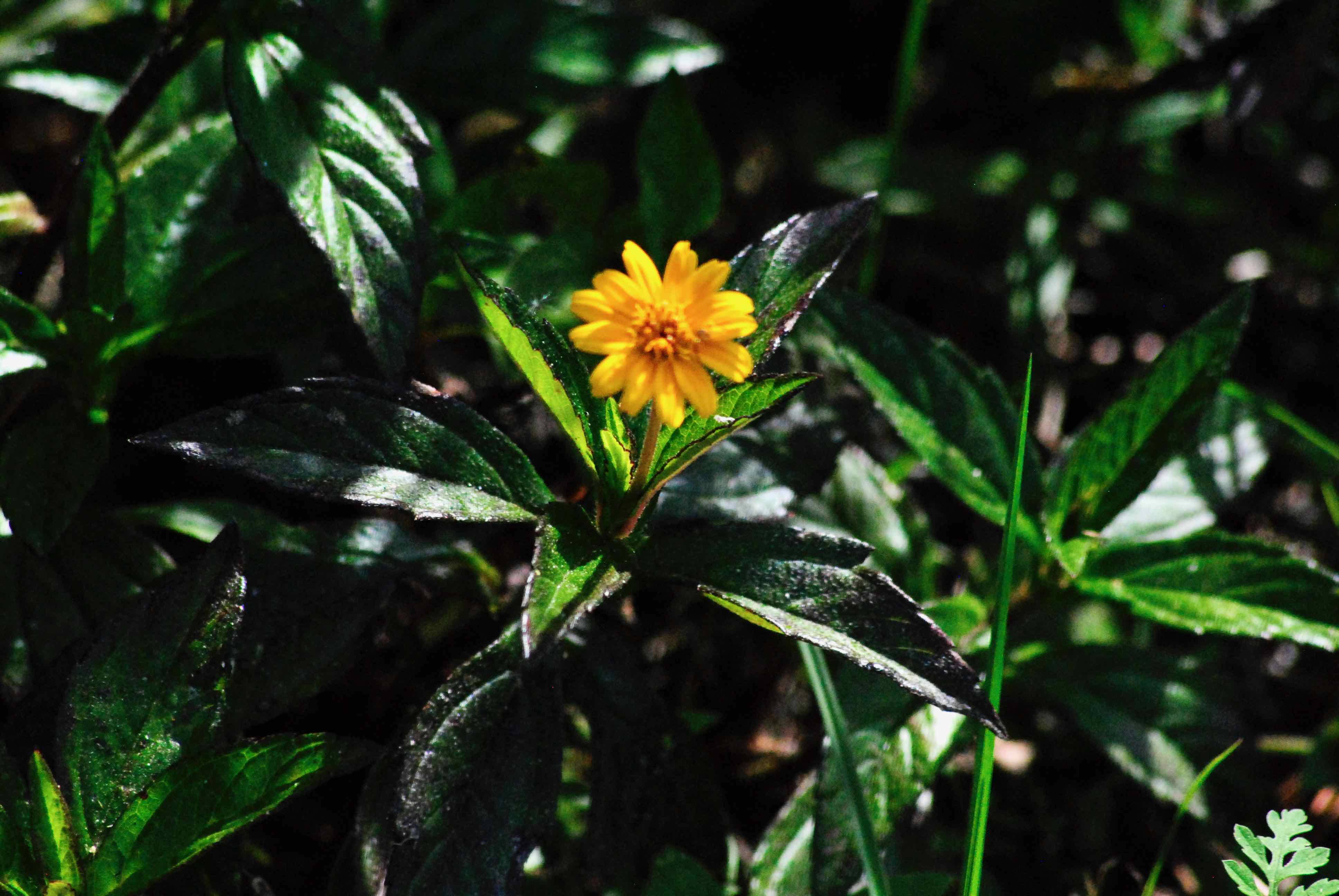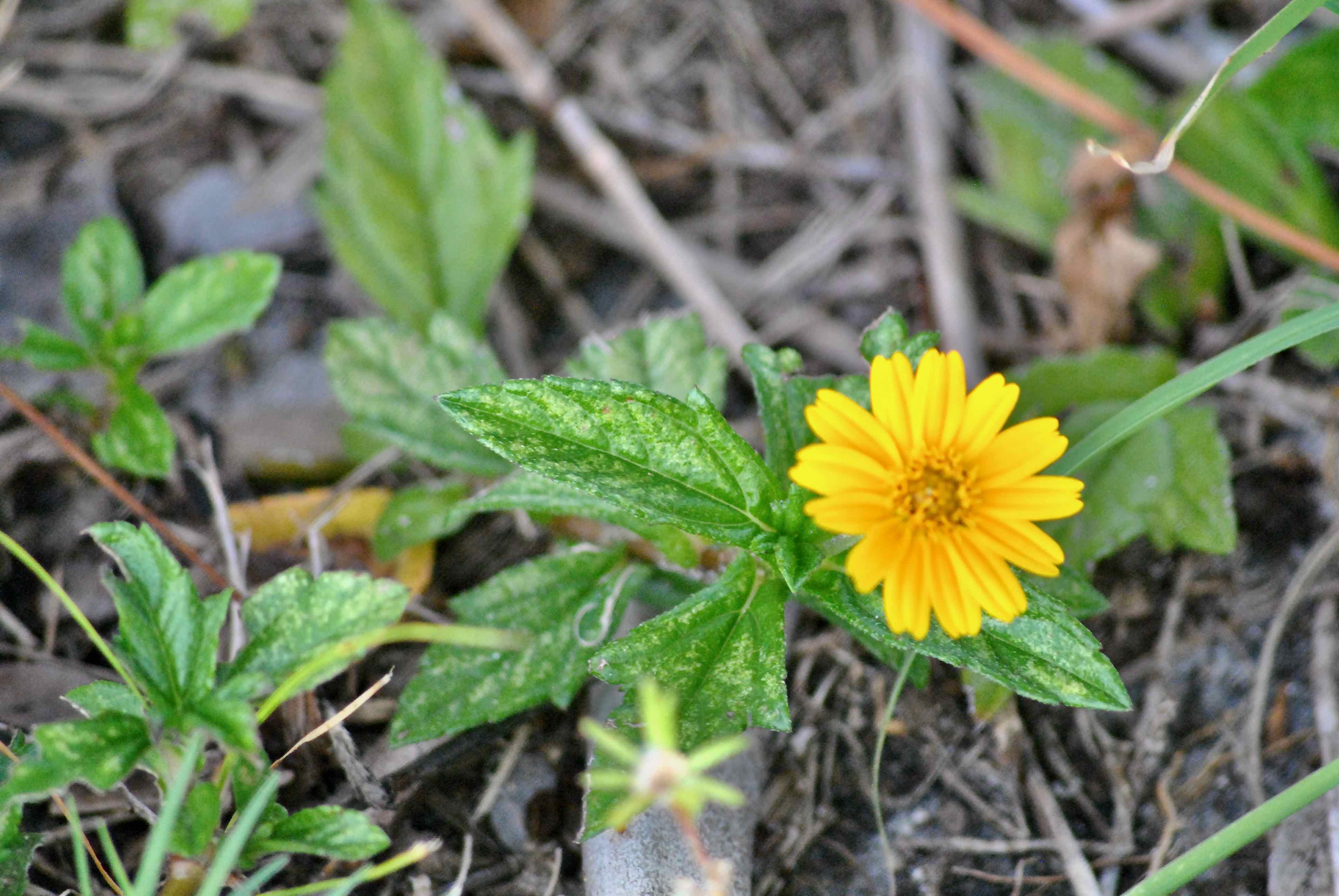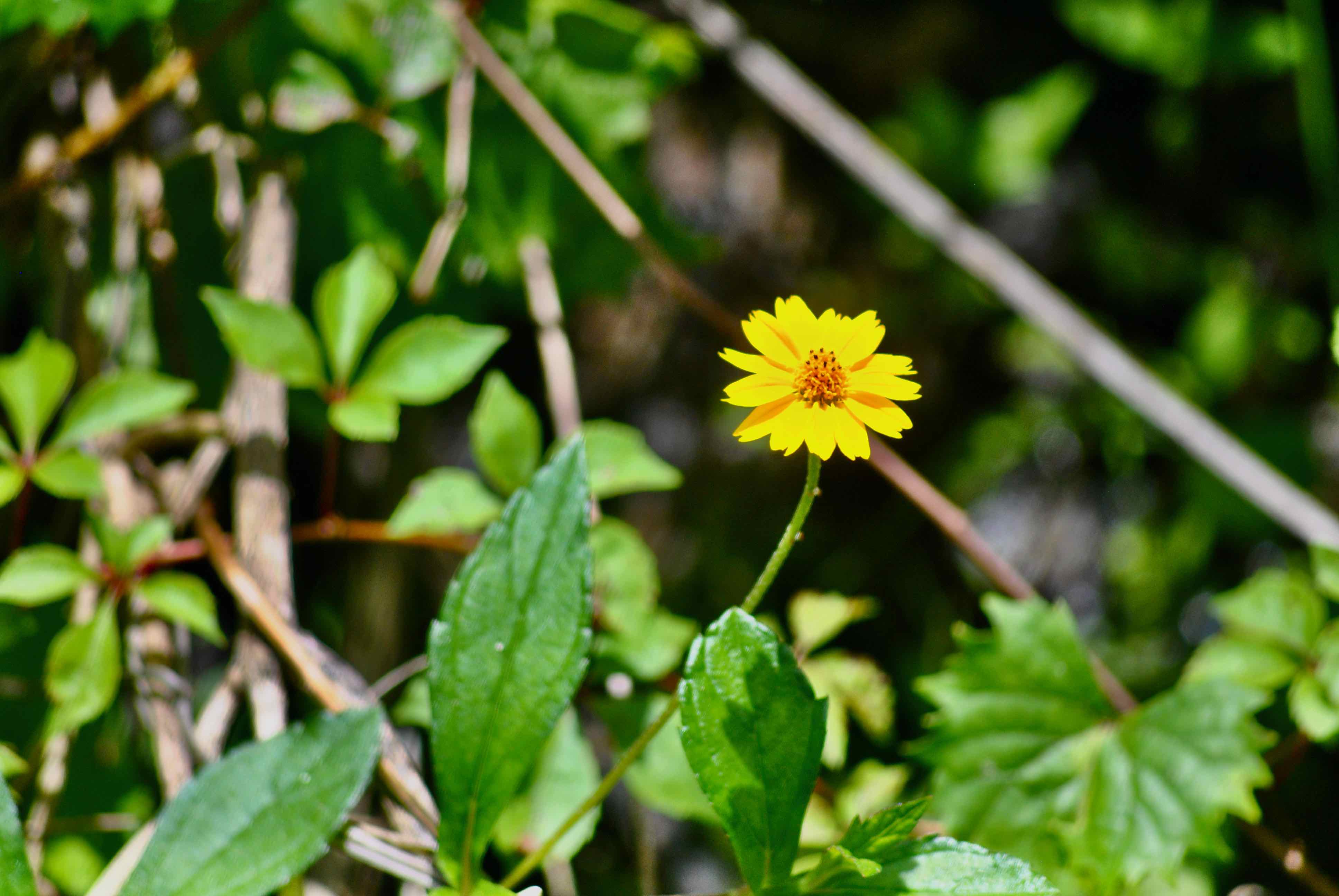
Creeping oxeye, photographed at Halpatiokee Regional Park, Stuart, Martin County, in May 2015.
The problem with creeping oxeye, Wedelia trilobata, or if you prefer, Sphagneticola trilobata, is its beauty. Good looks, and its utility, has made the plant a global menace. Yes, there can be too much of a good thing.
Creeping oxeye is a member of the Asteraceae, or aster family, native to the Caribbean, Mexico, Central America and South America. It is found throughout South Florida and in other parts of the Peninsula and Panhandle but it is not native to the state, having been brought here some time before the 1930s. It's also found as an introduced plant in Louisiana.
Creeping oxeye is a ground hugger, capable of forming dense mats; it sends out roots from nodes that form along the stems. Its leaves are glossy and irregularly toothed along the edges. It produces large, bright yellow-orange flowers about an inch across, which, at a distance, resemble dandelions, especially in a lawn setting, where creeping oxeye's often found, but the foliage is much different. The difference becomes obvious at close range.
It is a prolific flower producer but it is not a prolific seed producer. Instead, the major way creeping oxeye reproduces is vegetative, through pieces that break off from the main plant, find soil and root. Efforts to eradicate the plant instead can end up helping it spread.
Creeping oxeye thrives in open areas, prefers moist soil but can tolerate drought. Add the fact that it is a rapid grower to its beautiful flower and creeping oxeye is seemingly the perfect ground cover, and it's been cultivated in warm places around the globe for just that purpose. But the dense mats it forms crowd out native plants in the process.
It's classified as an invasive in parts of the Pacific islands, Hong Kong, South Africa, Austrailia and Indonesia.
The International Union for Conservation of Nature ranks it among the 100 world's worst weeds. Florida classifies it as a Class II invasive, meaning it's spreading but it hasn't transformed native habitats or harmed native species. Yet. We've had it in our yard; there's only one way to get rid of it. Remove. Every. Last. Piece. Carefully.
But creeping oxeye has a beneficial side to it as well. It's been used in traditional medicine to treat numerous conditions, including wounds, inflammation and reproductive ailments in women. In China, it's used to treat colds, hepatitis, indigestion and infections. In Vietnam, it's used to treat fevers and malaria. Researchers have found it to be a veritable chemical factory producing antioxidant, analgesic, anti-inflammatory, antimicrobial, wound-healing and antitumor compounds and more. Creeping oxeye is also known as Bay Biscayne creeping-oxeye, creeping wedelia, Singapore daisy and trailing daisy.
Halpatiokee Regional Park



